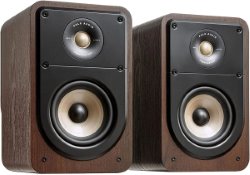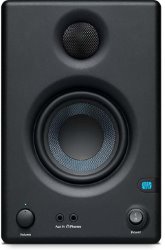Polk Signature Elite ES15 vs. Presonus Eris E3.5
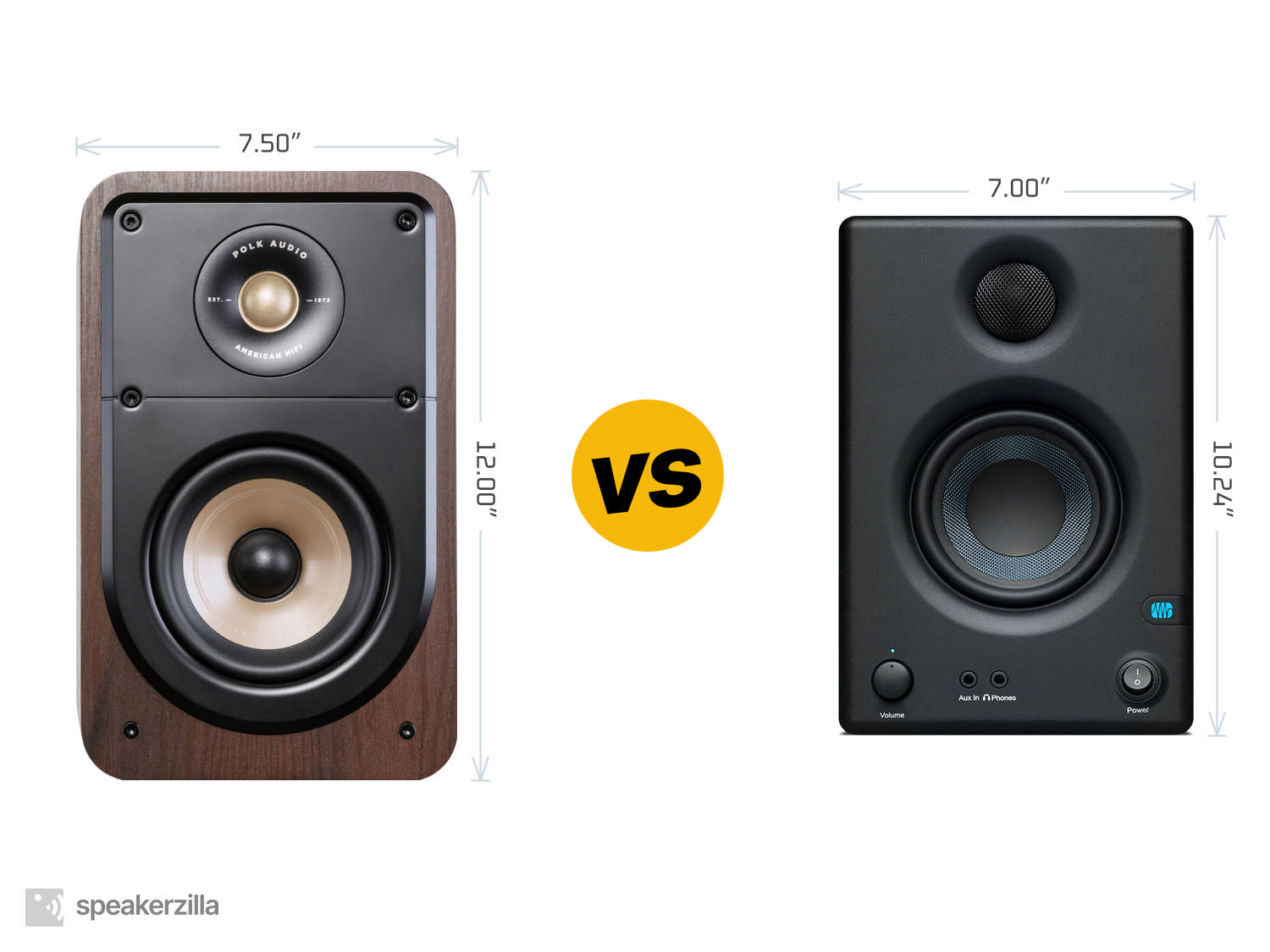
| Polk Audio Signature Elite ES15 Bookshelf Speakers | Presonus Eris E3.5 3.5” Near Field Studio Monitor |
| MSRP | |
| $300 | $100 |
| Dimensions (H × W × D) | |
|
12.00” × 7.50” × 10.20” 305mm × 190mm × 259mm |
10.24” × 7.00” × 7.68” 260mm × 178mm × 195mm |
| Power Type | |
| Passive | Powered |
| Frequency Response | |
| 48-40,000 Hz | 80-20,000 Hz |
| ASR Score | |
| n/a | 1.5 |
| ASR Score w/Subwoofer | |
| n/a | 4.3 |
|
Amazon.com
|
Amazon.com
|
Key Takeaways
TLDR Summary: Polk Audio's Signature Elite ES15 bookshelf speakers promise a rich, room-filling sound with a dynamic balance acoustic array and high-resolution certification—tailored for the audiophiles seeking a lush, full-range listening experience. In contrast, the Presonus Eris E3.5 studio monitors deliver precise, flat response with clarity and neutrality, aiming at content creators and sound professionals who require accurate sound reproduction for mixing and editing. While the Polk caters to high-fidelity home listening, the Presonus offers a professional tool for audio production—each excelling in their intended environments.
Speaker Comparison
When it comes to choosing between the Polk Audio Signature Elite ES15 Bookshelf Speakers and the Presonus Eris E3.5 3.5" Near Field Studio Monitor, audiophiles and casual listeners alike are faced with a decision that hinges on the balance between audio quality, aesthetics, and the specific use-case scenarios they have in mind. The evolution of sound systems has brought forth a plentitude of options, making it both an exciting and daunting task to pick the perfect set of speakers. Today, let's delve into the nuances that differentiate these two contenders and help you decide which may be the right choice for your sonic sanctuary.
Design and Build Quality
At first glance, the Polk Audio Signature Elite ES15s exude a sleek and modern aesthetic, with their gracefully curved edges and real-wood veneer finishes that can easily blend into any living space or dedicated listening room. The build quality is robust, indicative of Polk's commitment to durability. In contrast, the Presonus Eris E3.5 monitors have a more utilitarian design, reflecting their studio heritage. They feature a compact form factor with a professional-grade build that feels solid and is designed to withstand the rigors of studio use. While both are pleasing in their own rights, the Polk speakers certainly have a leg up in terms of blending with home decor.
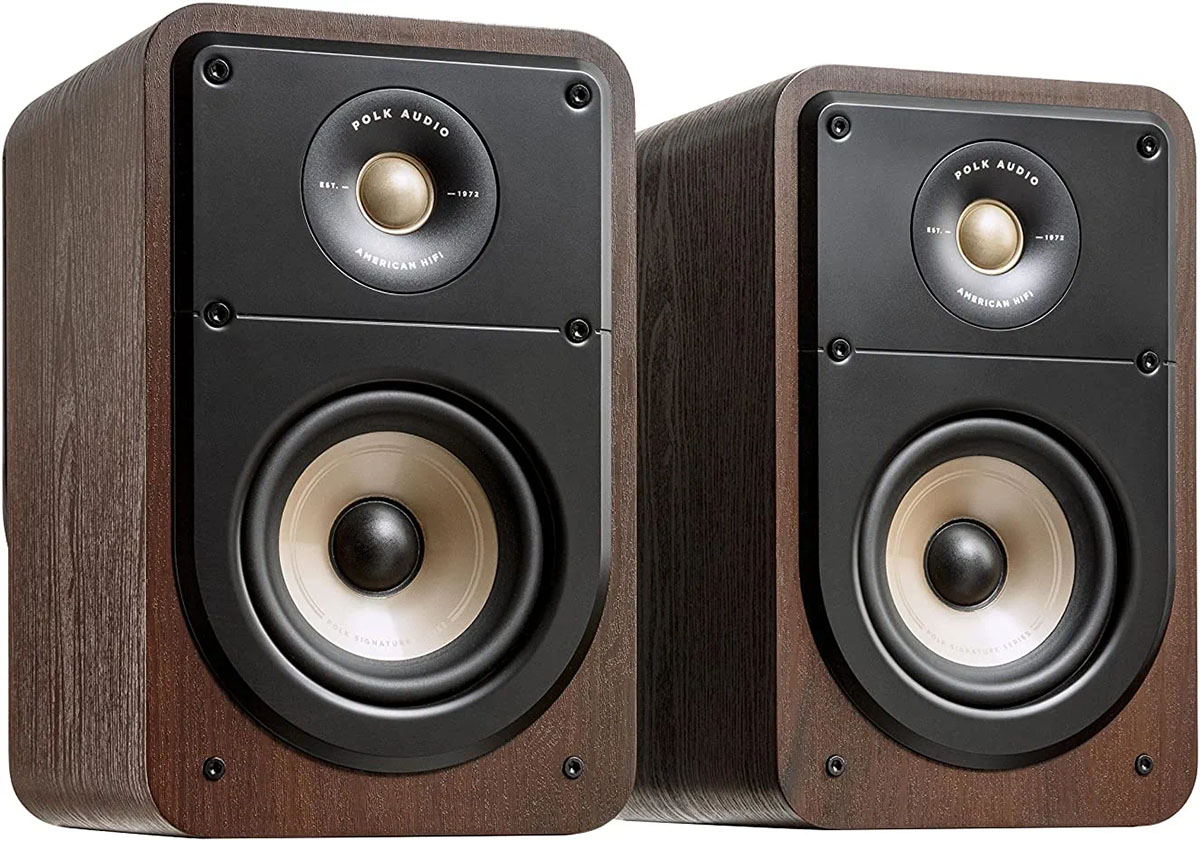
 (at Amazon.com)
(at Amazon.com)Sound Quality and Performance
The Polk Audio Signature Elite ES15 bookshelf speakers are designed with home theater and music enthusiasts in mind. They boast a rich and expansive soundstage, which is a testament to Polk's proprietary Dynamic Balance acoustic array. This lends them a warm and detailed sound profile that is both forgiving and engaging across various genres. On the other hand, the Presonus Eris E3.5 monitors are tailored for accuracy and flat response, aiming to provide a true representation of the audio as it was intended in the studio. They deliver a crisp and articulate sound, with astonishingly good imaging for speakers of their size, making them an excellent choice for content creators and those who demand precision in sound.
Power and Versatility
The Signature Elite ES15s are passive speakers, requiring an external amplifier or receiver to bring their drivers to life. This can be seen as an advantage or a disadvantage, depending on one's existing setup and willingness to invest in additional components. The added power can mean greater volume and dynamics, making them well-suited for larger rooms. Presonus' Eris E3.5, being active studio monitors, have built-in amplification, which makes them a more plug-and-play solution, perfect for desktop setups and smaller spaces. Their simplicity in setup is attractive for users who prefer a more straightforward listening experience or for those working in confined studio environments.
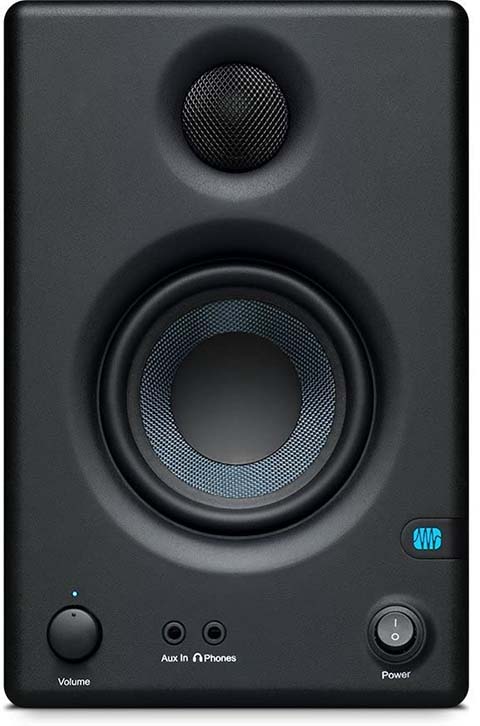
 (at Amazon.com)
(at Amazon.com)Connectivity options also vary between the two. Polk's ES15s are straightforward – they connect to an amplifier via traditional speaker wire. However, the Eris E3.5 studio monitors offer more versatility with their multiple inputs, including TRS and RCA, as well as convenient front-panel volume control and headphone output. This makes them more adaptable for different audio sources and easy to manage for nearfield monitoring scenarios.
Compare to similar speakers
Price and Value Proposition
Considering the price point, the Polk Audio Signature Elite ES15 speakers sit at a higher range compared to the Presonus Eris E3.5 monitors. This difference is justified by the Polk's larger drivers, more sophisticated crossover design, and construction geared towards audiophiles looking for a premium listening experience in their homes. Presonus, meanwhile, offers tremendous value for their price, providing professional-grade sound reproduction that is quite remarkable for the cost. For budding audio engineers or those on a tighter budget, the Eris E3.5 monitors represent an attractive entry point into the world of high-fidelity sound.
In conclusion, the choice between the Polk Audio Signature Elite ES15 bookshelf speakers and the Presonus Eris E3.5 studio monitors comes down to what you prioritize in your audio experience. The Polk speakers are likely to charm those who desire a lush, room-filling sound and have a penchant for aesthetics and traditional hi-fi setups. The Presonus monitors, conversely, will appeal greatly to those in pursuit of sonic accuracy and multimedia creation, all packaged in a compact and affordable solution. Whichever path you choose, rest assured that both offer compelling reasons to be the centrepiece of your auditory adventures.
- Polk Signature Elite ES15 reviews and FAQs
- Presonus Eris E3.5 reviews and FAQs
Check Current Prices: |
|
|
Amazon.com
|
Amazon.com
|
Affiliate Disclosure: As an Amazon Associate, we earn from qualifying purchases.
